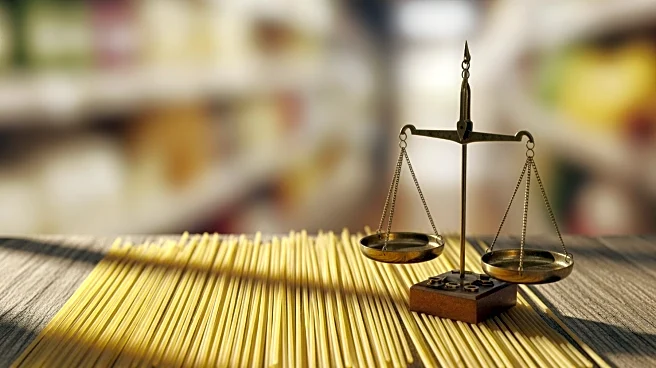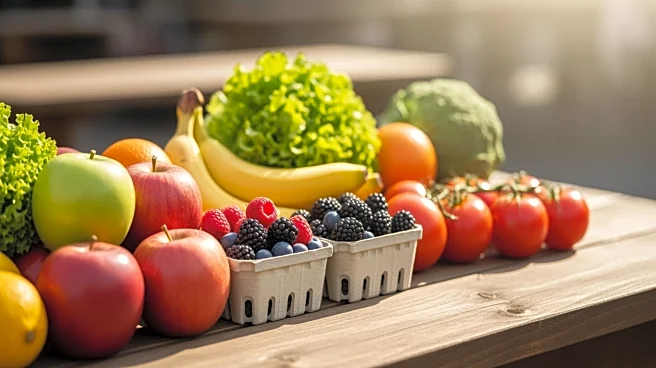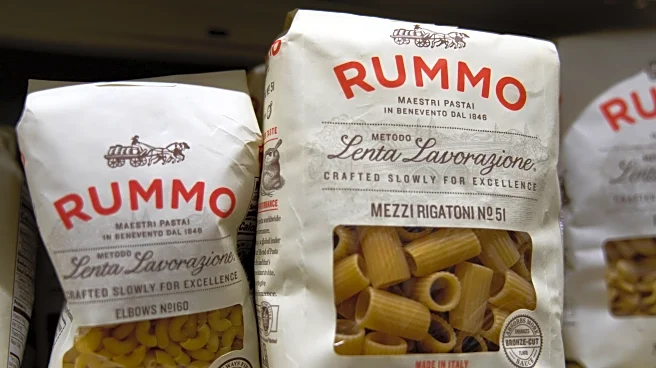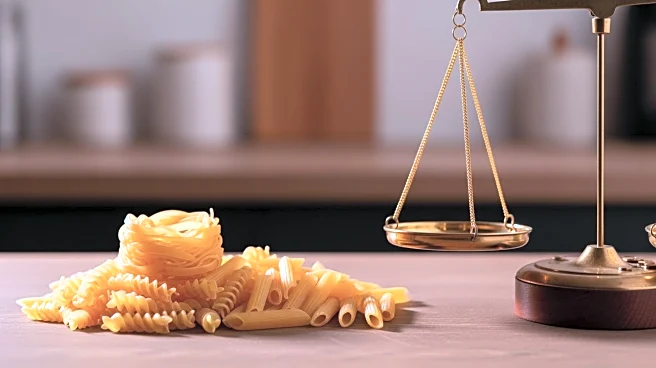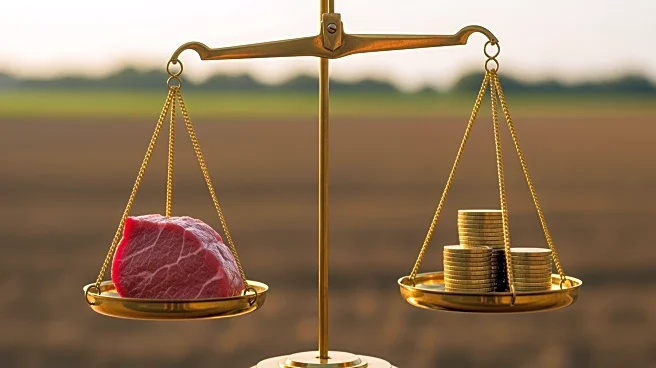What's Happening?
The U.S. Commerce Department has issued a preliminary decision to impose tariffs on imported pasta from 13 major Italian companies, potentially increasing costs by up to 107% starting January. This decision follows
a review initiated under the Biden administration, alleging that Italian producers were selling pasta in the U.S. at below-normal prices. The tariffs, which add a 92% duty on top of an existing 15% tariff on EU imports, aim to level the playing field for American manufacturers. Long Island grocers, such as Paul Barbieri of Pino's Italian Food Market, are stocking up on pasta in anticipation of price hikes. Some grocers hope the Trump administration will roll back these duties, as it has with other trading partners.
Why It's Important?
The potential increase in tariffs on Italian pasta could significantly affect Long Island grocers and consumers, leading to higher prices or reduced availability of popular brands like Barilla and Garofalo. This move may benefit American pasta manufacturers by reducing competition from imported goods. However, it could also strain relationships with Italian producers and impact businesses that rely heavily on imported pasta. Grocers may need to adjust their sourcing strategies or pass increased costs onto consumers, affecting local economies and consumer choices.
What's Next?
Grocers are waiting to see if the Trump administration will intervene to reduce or eliminate the proposed tariffs. Italian pasta makers have several months to participate in the review process, which could lower the tariff rate if they provide the requested data. The final determination is expected next year, and stakeholders are closely monitoring developments to assess the impact on pricing and supply chains.
